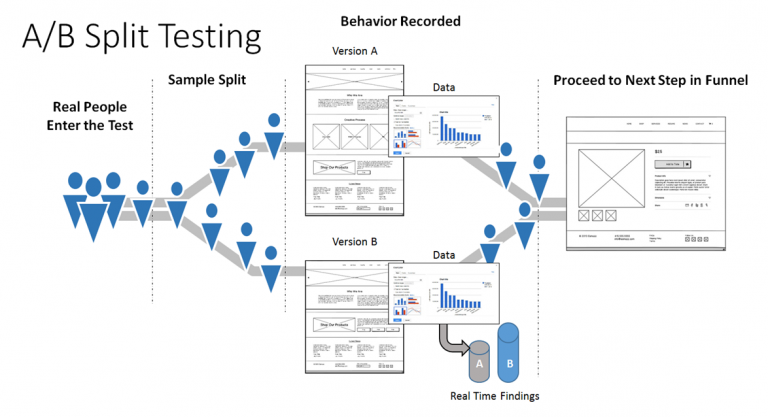A/B Testing and Optimization
A/B testing is important because it enables businesses to make data-driven decisions, optimize their marketing efforts, continuously improve their strategies, personalize experiences, and enhance the user experience. It is a valuable practice that can lead to better results, increased customer satisfaction, and improved ROI for businesses.
I am a strong believer in:
Data-driven decision making: A/B testing allows businesses to gather empirical data on how different variations of a webpage, email, ad, or other marketing element perform with real users. This data provides valuable insights into user behavior, preferences, and preferences, which can guide businesses in making informed decisions about which variations are more effective in achieving their goals.
Optimization: A/B testing helps businesses identify the most effective version of a marketing element by comparing different variations in a controlled manner. By testing different elements such as headlines, images, call-to-actions, and layouts, businesses can optimize their marketing efforts by identifying the best-performing variation and using it to drive better results.
Continuous improvement: A/B testing promotes a culture of continuous improvement, where businesses can continuously test and optimize their marketing elements to achieve better results over time. It allows businesses to iterate and refine their marketing strategies based on real-world data, rather than relying on assumptions or gut feelings.
Personalization: A/B testing enables businesses to personalize their marketing efforts based on user behavior, preferences, and demographics. By testing different variations tailored to different segments of their audience, businesses can deliver more relevant and targeted experiences, resulting in higher engagement, conversions, and customer satisfaction.
Making it Cost-effective: A/B testing can be a cost-effective way to optimize marketing efforts. By testing different variations, businesses can identify and fix issues, make improvements, and prioritize resources based on what works best. This can help businesses avoid costly mistakes and allocate resources more efficiently.
Enhanced user experience: A/B testing allows businesses to test and optimize user experience elements such as website navigation, content layout, forms, and checkout processes. This helps ensure that users have a smooth and seamless experience, leading to higher engagement, conversions, and customer satisfaction.
My belief:
I am a believer of “Always Be Testing” – While the cost of acquiring paid traffic can be huge, the cost of increasing your conversions can be minimal. The Return On Investment of A/B testing can be massive, as even small changes on a landing page or website can result in significant increases in leads generated, sales and revenue.
As an example – By testing ad copy, marketers can learn which version attracts more clicks. By testing the subsequent landing page, they can learn which layout converts visitors to customers best. The overall spend on a marketing campaign can actually be decreased if the elements of each step work as efficiently as possible to acquire new customers.
The greatest aspect of A/B Testing though is it allows you to construct hypotheses, and to learn better why certain elements of their experiences (changes to the headline, visual imagery, form fields, call to action, and overall layout of the page) impact user behavior through the use of DATA!
Create a test plan the elements on your page that are likely to produce significant results. For example, a banner or a hero image is probably going to lead to more conversions that a change in the footer. Including less-influential elements in your test only increases the amount of traffic and time required to test the more prominent elements on the page.


